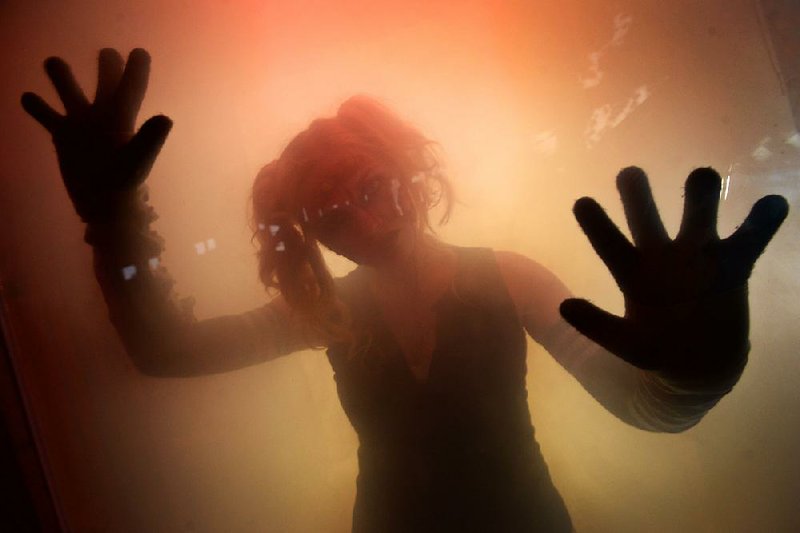Dear Otus,
I have been a faithful reader for decades (yes, decades) and I have a bone to pick with you.

Disclaimer: Fayetteville-born Otus the Head Cat's award-winning column of 👉 humorous fabrication 👈 appears every Saturday.
You are always very careful each summer to warn us about the approach of Arkansas' infamous humidity pods. In fact, we frequently plan family reunions around their arrival so we can watch them roll in.
However, you never inform us about when they are going to leave and that almost proved tragic for my daughter, who is a junior at the university in Fayetteville.
She sent me this selfie (attached) from last weekend when she was attacked by a humidity pod on campus totally without warning. Had you been doing your job, Mr. Head Cat, we would have warned her to stay indoors. Please try to do better.
-- Lou Gubrious,
Holly Grove
Dear Lou,
It was wholly a pleasure to hear from you despite your unwarranted admonition and the accusatory tone of your email.
I will readily admit when I am at fault, but in the case of humidity pods, I am not now, nor have I ever been, to blame.
There is a simple scientific explanation for the lack of information concerning the departure of the pods from Arkansas that is entirely unrelated to the prognostication of their arrival.
Whereas the swift and impressive ingress of the giant amorphous pods from their wintering grounds in Mexico's Bay of Campeche is based on a precise formula of dew points, sun angle, Gulf Stream activity, the Bermuda high and El Nino, the podal egress event (known in meteorological terms as the "hygrometric evaporative equilibrium" or HEE) takes place in spurts over a matter of weeks.
In fact, right up there on campus with your daughter is the foremost school of engineering studying humidity pods.
The University of Arkansas Vollie Alexander Jr. College of Psychrometry is on the cutting edge in the engineering discipline concerned with the determination of physical and thermodynamic properties of gas-vapor mixtures.
It was there that the Skew-T Suction Vortices Detector was developed that has helped prevent a repetition of the infamous 1994 Riverfest superpod incident that squashed Patches the Clown. That rogue pod came out of nowhere and put the popular clown out of commission for six months.
Aside: Patches, now 82, retired in 2002 and is living in Bella Vista. He still performs at the occasional children's birthday party, although his balloon animals are limited to worms.
"With the detector, we can now predict the arrival of the pods within an hour or two," says Brandon Farquar, dean of the college. "We can also predict their severity on the Fujita Pod Scale and any associated and accompanying mesoscaleconvective systems." In layman's terms, the pod scale, or FPS, goes from FPS0 (weak) to FPS5 (massive).
For the record, Farquar says this summer's humidity pod event was recorded as FPS3 (strong) and the duration has been exasperated by the heavy rains Arkansas endured from Aug. 12 through Aug. 20. That would normally be a time when the foundation is being established for the first HEE.
The August rains may have delayed by up to two weeks this year's initial pod egress oozing. In normal years, the oozings take place from the middle of September through the first week of October. The latest a pod oozing has been reported is Oct. 23, according to the 2015 Arkansas Pod Society almanac, The Occult Hand. And that was only twice -- 1889 and 1942.
So, how to explain what happened to your daughter? One phone call to Farquar cleared up the mystery as to your daughter's photo (which, by the way, is obviously not a selfie).
According to the time stamp on the photo, it was taken precisely at 10:04 p.m., Sept. 10. As it turns out, that was two minutes after the entire campus erupted following the Razorbacks' double overtime victory over TCU.
The prolonged celebratory vibrations caused the display pod outside the engineering building to oscillate beneath its retention net and it escaped, sliming nearby students, including your daughter.
The pod had been on outdoor display for the Geosciences Colloquium presented by the Association for Women Geoscientists Distinguished Lecturer Program. The display pod is normally kept in the basement under climate control.
Until next time, Kalaka reminds you to look before you leap to conclusions.
Disclaimer
Fayetteville-born Otus the Head Cat's award-winning column of
Z humorous fabrication X
appears every Saturday. Email:
mstorey@arkansasonline.com
HomeStyle on 09/17/2016
